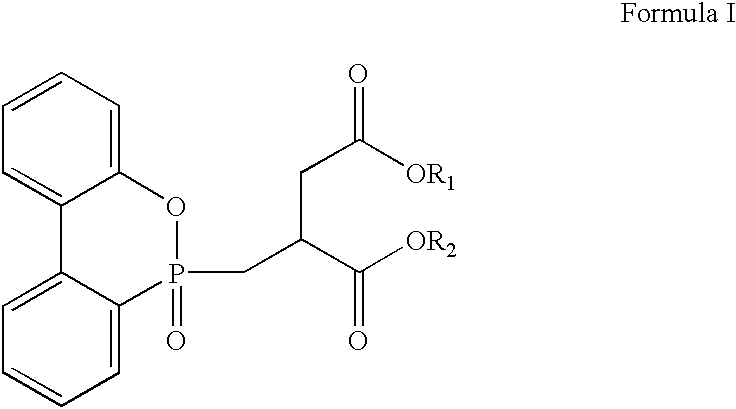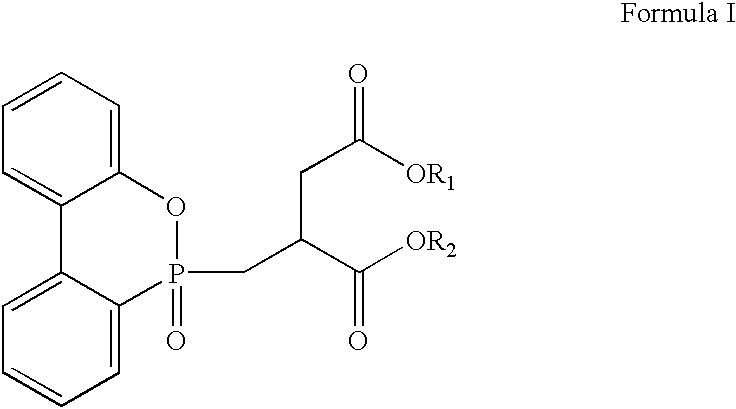Flame retardant polybutyleneterephthalate resin
a technology of polybutyleneterephthalate and flame retardant resin, which is applied in the direction of basic electric elements, electrical equipment, greenhouse cultivation, etc., can solve the problems of increased cost, poor flame retardancy, and inability to withstand combustion, and achieve good flame retardancy and remarkably improved properties
- Summary
- Abstract
- Description
- Claims
- Application Information
AI Technical Summary
Benefits of technology
Problems solved by technology
Method used
Image
Examples
example 2
The procedures were performed in the same manner as described in Example 1, excepting that 0.5 part by weight of 9,10-dihydro 9-oxa-10-[2,3-di-(methoxycarbonyl)propyl]-phosphaphenanthrene-10-oxide was added as a phosphorus-based flame retardant to prepare flame retardant polybutyleneterephthalate. The flame retardant polybutyleneterephthalate thus obtained had an intrinsic viscosity of 1.120 and was ranked as UL94-V2 in flame retardancy. The flame retardant polybutyleneterephthalate also had processability under the same conditions as polybutyleneterephthalate.
example 3
The procedures were performed in the same manner as described in Example 1, excepting that 25 parts by weight of 9,10-dihydro-9-oxa-10-[2,3-di-(methoxycarbonyl)propyl]-phosphaphenanthrene-10-oxide was added as a phosphorus-based flame retardant to prepare flame retardant polybutyleneterephthalate. The flame retardant polybutyleneterephthalate thus obtained had an intrinsic viscosity of 0.912 and was ranked as UL94-V0 in flame retardancy. The flame retardant polybutyleneterephthalate also had processability under the same conditions as polybutyleneterephthalate.
example 4
The procedures were performed in the same manner as described in Example 1, excepting that 10 parts by weight of 9,10-dihydro-9-oxa-10-[2,3-di-(hydroxybutoxycarbonyl)propyl]-phosphaphenanthrene-10-oxide was added as a phosphorus-based flame retardant represented by the formula I to prepare flame retardant polybutyleneterephthalate. The flame retardant polybutyleneterephthalate thus obtained had an intrinsic viscosity of 0.945 and was ranked as UL94-V0 in flame retardancy. The flame retardant polybutyleneterephthalate also had processability under the same conditions as polybutyleneterephthalate.
PUM
| Property | Measurement | Unit |
|---|---|---|
| tensile elongation | aaaaa | aaaaa |
| particle diameter | aaaaa | aaaaa |
| wt. % | aaaaa | aaaaa |
Abstract
Description
Claims
Application Information
 Login to View More
Login to View More - R&D
- Intellectual Property
- Life Sciences
- Materials
- Tech Scout
- Unparalleled Data Quality
- Higher Quality Content
- 60% Fewer Hallucinations
Browse by: Latest US Patents, China's latest patents, Technical Efficacy Thesaurus, Application Domain, Technology Topic, Popular Technical Reports.
© 2025 PatSnap. All rights reserved.Legal|Privacy policy|Modern Slavery Act Transparency Statement|Sitemap|About US| Contact US: help@patsnap.com



